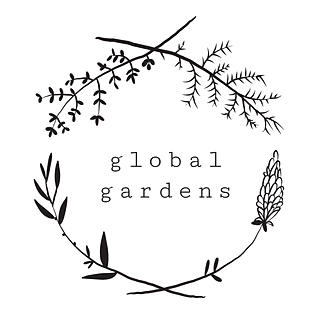EDICULTURE #4
- Global Gardens
- Jun 15, 2022
- 3 min read
Updated: Feb 24, 2023
22.05.2022
by Brynn Copnall
The fourth Ediculture session was all about seasonal rhythms and cycles.

What rhythms do we live by? What cycles of time pass us without us knowing and what cycles do we live our lives by without ever considering them?
We started our day with an exercise where you pop your fingers in your ears and tense the muscles in your ears, You’ll hear a small "hmmm". This is the pulse of your nervous system. We then felt our pulse against our wrist to feel the beat of our heart. Tuning our thoughts into our breathing at the same time. Roughly two beats of our hearts to one breath. We noticed how our heart beat increased as we breathed in. After spending time listening to the inner rhythms of our own bodies we brought ourselves back to the space with the other people we were sharing it with.

Moon cycles
We started to look for longer and wider cycles outside of our bodies. We drew 28 day on a circle and marked the quarter marks for the moon phases. I look for the moon in the sky and have looked at moon phases on a calendar many times. We did something different, we wrote on our plans for the next month. Seeing where the gaps were and how they lined up with the moon. It made it feel personal and real, not something outside of ourselves.
Sun cycle
Stephen then got out some props to tune in to the next rhythm, the ryhthm of the sun. The fire pit became the sun and a frying pan the earth, the moon a drumstick. What we think of as the cycles of the year and winter, spring, summer and autumn. This is affected by uf being in a temperate zone of the world with a hot and a cold season. Whereas a country located in a tropical zone might have a hot and a hot rainy season.
Aligning with the moon and sun cycles
How do we align ourselves with these cycles as growers? Stephen described matching them up with the cardinal directions. They matter to us because we are in the northern temperate climate shifting between cold and hot through the year based on the earth's tilt from the sun. Many growers place the south in the top of their maps instead of at the bottom as on a navigational map or a sailing map. The summer is our vital upwards season of action in temperate climates whereas the northern winter is our time of rest, repair and planning.
Where and when to do different gardening activities
After lots of talking, listening and thinking we got up for some more on our feet learning. We marked out north, east, south, west in the garden's forest school tent and took different tasks that needed to be done every year in a garden and placed them with stickers and some bamboo to their appropriate time of year.
In spring we had planting out seedlings, harvesting salad and lots of watering. Summer harvesting and preserving. Autumn is the final harvest and every type of preserving you can think of. Winter was a time for planning that to grow the next year and repairing tools and clearing soil.
Combining the talking and thinking with the action of making decisions when to do tasks made them feel more real and manageable.
It is important to remember though that we are not just growers we are also parents, students, workers, carers and many other responsibilities. You don’t need to plant every drop ever imaginable and be completely self sustainable just by yourself. If you manage to only plant potatoes and garlic, that's two crops you can provide for yourself. Maybe add a fruit bush that doesn’t need as much planning each year or one extra crop that will be a fun one for you like flowers.
Plus we had yummy cake made by one of the course participants Ruth!

With huge thanks to the National Lottery Community Fund in Wales for making this workshop possible.












Comments